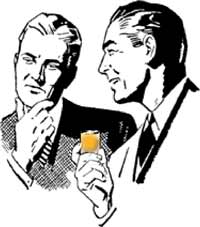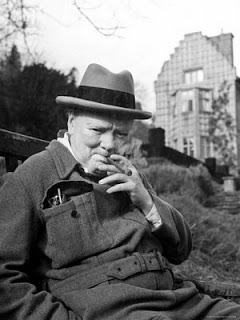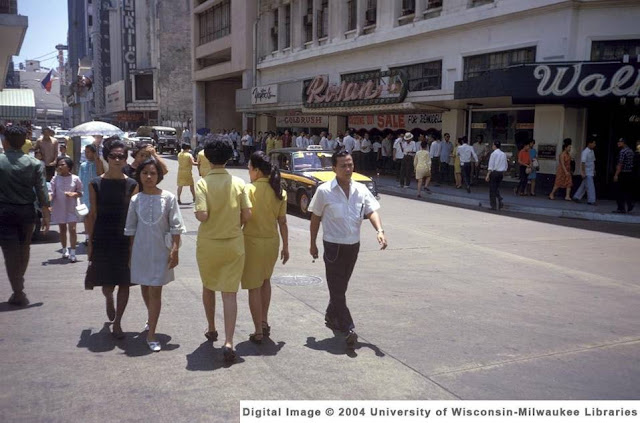Tuesday, November 9, 2010
Benjamin "Small Montana" Gan, World Flyweight Champion, Sep 16, 1935 - Jan 9, 1937
Benjamin "Small Montana" Gan, World Flyweight Champion, Sep 16, 1935 - Jan 9, 1937
Boxing records: Total fights, 118; Wins, 83; Wins by KO, 18; Losses, 24; Draws. 10
Early life
Benjamin Gan was born in Negros Occidental, Philippines, on February 24, 1913, a son of the local chief of police. He was of Chinese descent.
Gan grew up with the passion for boxing and was inspired by the fights of the legendary Francisco Guilledo. He carried a photo of Guilledo in his wallet at all times. At a young age, Gan changed his name to Small Montana ("little mountain") and ran away from home to become a professional boxer in 1931.
Professional career
He won the American flyweight title by beating Midget Wolgast twice in 1935. He also went abroad to defend his title, but lost to Benny Lynch in a 15 round bout in London on January 9, 1937.
He also tried to fight for a world championship but fell short in all his world title matches. During his career he fought Little Dado and Little Pancho (half-brother of Francisco Guilledo) but lost to both of them on points.
Although he never won a world title, he defeated Manuel Ortiz, Midget Wolgast, Tony Marino, Joe Tei Ken, Speedy Dado, Tommy Forte, Augie Curtis, Pat Palmer, Frankie Jarr, Eugene "Tuffy" Pierpont and Antol "Tony" Kocsis.
Boxing records: Total fights, 118; Wins, 83; Wins by KO, 18; Losses, 24; Draws. 10
Early life
Benjamin Gan was born in Negros Occidental, Philippines, on February 24, 1913, a son of the local chief of police. He was of Chinese descent.
Gan grew up with the passion for boxing and was inspired by the fights of the legendary Francisco Guilledo. He carried a photo of Guilledo in his wallet at all times. At a young age, Gan changed his name to Small Montana ("little mountain") and ran away from home to become a professional boxer in 1931.
Professional career
He won the American flyweight title by beating Midget Wolgast twice in 1935. He also went abroad to defend his title, but lost to Benny Lynch in a 15 round bout in London on January 9, 1937.
He also tried to fight for a world championship but fell short in all his world title matches. During his career he fought Little Dado and Little Pancho (half-brother of Francisco Guilledo) but lost to both of them on points.
Although he never won a world title, he defeated Manuel Ortiz, Midget Wolgast, Tony Marino, Joe Tei Ken, Speedy Dado, Tommy Forte, Augie Curtis, Pat Palmer, Frankie Jarr, Eugene "Tuffy" Pierpont and Antol "Tony" Kocsis.
Francisco "Pancho Villa" Guilledo May 18, 1923 to July 4, 1925
Francisco "Pancho Villa" Guilledo, World Flyweight Champion, May 18, 1923 - Jul 4, 1925
Boxing record
Total fights, 109; Wins, 92; Wins by KO; 24; Losses, 8; Draws, 4; No contests, 0
Boxing record
Total fights, 109; Wins, 92; Wins by KO; 24; Losses, 8; Draws, 4; No contests, 0
Monday, November 8, 2010
Bar Rule No. 3
Whoever buys the shot gets the first chance to offer a toast.
Manila Castillian Memoirs 1930s
This clip shows more of Filipino Fashion at that time and if you like the Cebu Dancing Inmates, you'd be surprised that the Bilibid Prison was also known for its inmate's calisthenic exercises.
Sunday, November 7, 2010
The Heroism of Captain Manuel Colayco
 |
| Inside the UST Main Building, WWII Source: http://oi28.tinypic.com/15xv3md.jpg |
Santo Tomas internees liberated
If you went to High School in UST during the 80's and before that, you'd probably be familiar with the bamboo garden and the statue of Manuel Colayco.
This statue of Manuel Colayco was much abused every year. Students would dress it up with caps, scarves, shades, skirts, neckties and all other manner of clothing -- being foolishly unaware of his role in liberating the prisoners that were held captive inside the UST grounds.
American Occupation, uprising in Samar
On Samar, the Filipino population staged a famous guerilla attack in the town of Balangiga. Weary of American human rights violations, the townsfolk attacked with nothing but bolos and bamboo spears killing forty US soldiers timed to the ringing of the church bells. In response US General “Howling” Jake Smith, ordered out the extermination of the islands inhabitants:
“I want no prisoners. I wish you to kill and burn, the more you kill and burn the better it will please me. I want all persons killed who are capable of bearing arms in actual hostilities against the United States.” General Jacob H. Smith said.
Major Littleton “Tony” Waller asked “I would like to know the limit of age to respect, sir?.”
“Ten years,” Smith said. [from Wikipedia]
(Source Alex Felipe Photography)
American Occupation, two women begging for food from American soldiers
The killers of Dr. William Jones
 |
| Source www.alexfelipe.wordpress.com, archival photos from Univ. of Wisconsin |
I was interested in this photo from 1909 instantly, two Filipino indigenous men, captives of colonized Filipino soldiers working for the Americans. One of the bound men had a look that seemed to me fearful, while the other seemed proud and defiant. The caption under the photo only told me that they were the killers of Dr. William Jones
American Occupation, soldier poses with two Filipina women
Old aerial photograph of Cebu
An account of Cebu from the Wiki:
In the 16th century, Cebu City was an area part of the Rajahnate of Cebu with an Islamic, Hindu and Animist populations. On April 7, 1521, Portuguese explorer Ferdinand Magellan landed in Cebu. He was welcomed by Rajah Humabon, the King of Cebu, who together with his wife and about 700 native islanders, were baptized by the Spaniards on April 14, 1521. Magellan, however, failed to successfully claim the Philippines for the crown of Spain, having been killed by Datu Lapu-Lapu, a king in Mactan Island on April 27, 1521 in the Battle of Mactan. On April 27, 1565, Spain colonized the area with the arrival of Spanish explorers led by Miguel López de Legazpi, together with Augustinian Friar Andrés de Urdaneta, sailing from Mexico, arrived in Cebu. The Spaniards established settlements, trade flourished and renamed the city on January 1, 1571, from San Miguel (Saint Michael) to Villa del Santísimo Nombre de Jesús (Village of the Most Holy Name of Jesus). During this six year period of exploration and settlements by the Spaniards, Cebu City was the capital of the Spanish East Indies
Old Cebu Railyway
Most people may have probably forgotten that there was a Cebu Railway.
The Cebu Heritage website recounts
The Cebu Heritage website recounts
Unknown to the newer generation, Cebu used to have a railway system that stretched from as far as Argao down south all the way to Danao up north. The central station and the depot were located in Cebu City somewhere at the area now occupied by the Cebu South Bus Terminal and the CITOM-LTO compound. The railway system ceased to function after World War II. (Author Emperor Karl)
 |
| Photo Credit: www.tropicalpenpals.com |
The website www.tropicalpenpals.com says that two congressmen filed House Bill 310 and House Bill 432 in 2009 proposing the construction of a Light Rail Transit (similar to the one that runs in Metro Manila). I just wonder if the bills filed by Congressman Eduardo R. Gullas and Congressman Raul V. Del Mar were refiled.
Friends in Cebu that the construction of an LRT in Cebu might help with the growing traffic problems they have there.
Saturday, November 6, 2010
Code of Kalantiaw
(The Code of Kalantiaw has long been debunked as a fake. We're posting it here as a curio. And if you read it, you'll notice that 'excessive lust' is punished in several instances.)
Old Pasig River
Precursor to the LRT and MRT, the Tranvia
Friday, November 5, 2010
Boxing Rule No 1
You cannot hit below the belt, hold, trip, kick, headbutt, wrestle, bite, spit on, or push your opponent.
Subscribe to:
Posts (Atom)












































